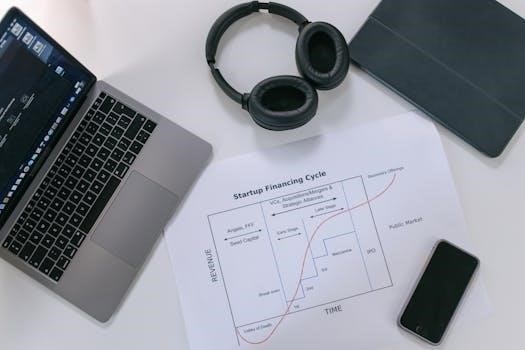The Brief Psychiatric Rating Scale (BPRS) is a clinical tool used to assess psychiatric symptoms. It is frequently utilized to evaluate the severity of symptoms, particularly in psychotic disorders like schizophrenia, and monitor changes.
Overview of BPRS and its purpose
The Brief Psychiatric Rating Scale (BPRS) stands as a standardized psychiatric assessment tool designed to evaluate the presence and severity of various symptoms in individuals with mental health conditions. Primarily, the BPRS serves the purpose of quantifying the range and intensity of symptoms, particularly in those with psychotic disorders like schizophrenia. It also facilitates the monitoring of symptom changes over time, helping clinicians gauge the effectiveness of interventions or track the natural progression of the illness. The BPRS is used to assess positive, negative and affective symptoms. The BPRS offers a rapid method for evaluating patients by incorporating anchor points, interview questions, and rating guidelines, making it a practical tool in clinical practice for assessing and tracking psychiatric symptoms.

Key Features of the BPRS
The BPRS has two main versions, one with 18 items and another with 24, both employing a 7-point scale to assess symptom severity, from not present to extremely severe.
Number of items in the BPRS⁚ 18 and 24-item versions
The Brief Psychiatric Rating Scale is available in two primary formats, distinguished by the number of symptom constructs they evaluate. The original, shorter version consists of 18 items, providing a more concise overview of key psychiatric symptoms. This version is often preferred when time is a limiting factor or when a more focused assessment is adequate. In contrast, the expanded 24-item version includes additional constructs, allowing for a more comprehensive evaluation of a broader range of symptoms. The choice between the 18 and 24-item versions depends on the specific clinical needs, the depth of assessment required, and the time available for administration, with both versions maintaining the core structure and scoring methodology of the BPRS.
Rating scale used in BPRS⁚ 7-point scale
The Brief Psychiatric Rating Scale employs a 7-point rating scale to quantify the severity of each symptom construct. This scale ranges from 1, indicating that the symptom is “not present,” to 7, representing “extremely severe” manifestations of the symptom. The intermediate points on the scale allow for nuanced ratings, capturing varying degrees of symptom intensity. The use of a 7-point scale provides clinicians with a structured approach to assess the extent to which each symptom is present, facilitating a more detailed and objective evaluation of the patient’s condition. This detailed rating system is crucial for tracking changes over time and assessing the effectiveness of interventions.
BPRS Symptom Constructs
The BPRS assesses a range of symptoms, including somatic concern, anxiety, emotional withdrawal, guilt feelings, and tension. These constructs help in evaluating the severity of the patient’s condition.
Somatic Concern
Somatic concern, as assessed by the BPRS, refers to a patient’s preoccupation with their physical health. This includes excessive worry about having a physical illness, often manifesting as hypochondriasis. It’s characterized by a focus on bodily sensations and a fear of being sick, even in the absence of objective medical findings. This symptom construct explores the extent to which a patient is troubled by physical health issues, whether these are perceived or real. The rating considers the intensity and frequency of these concerns, offering a critical element in evaluating a patient’s overall psychological state. It is important to assess the patient’s subjective experience of physical health worries; This includes verbal reports of concerns and preoccupation.
Anxiety
In the context of the BPRS, anxiety is evaluated as the level of worry, fear, and over-concern an individual experiences regarding present or future events. This includes feelings of uneasiness and apprehension that may be persistent or situational. The assessment of anxiety goes beyond typical everyday worries and delves into the depth and pervasiveness of the patient’s anxious thoughts and feelings. The BPRS seeks to quantify the severity of this anxiety, focusing on the subjective experience of the patient. It encompasses a wide spectrum of anxiety-related symptoms, from mild unease to intense fear. It is important to determine the extent to which anxiety affects their daily life and overall well-being.
Emotional Withdrawal
Emotional withdrawal, as assessed by the BPRS, refers to a patient’s reduction in emotional engagement with their environment and other people. This symptom construct explores the degree to which an individual seems detached, aloof, or unresponsive to social interactions. It looks for signs of reduced affect, such as a flat or blunted emotional expression, and a disinterest in activities that would typically evoke pleasure or excitement. Emotional withdrawal encompasses both inward-directed detachment and outward social disengagement. The rating considers the patient’s ability to connect emotionally with others and the extent to which they isolate themselves. It’s a critical symptom to evaluate for psychotic disorders.
Guilt Feelings
The ‘Guilt Feelings’ item within the BPRS assesses the patient’s subjective experience of remorse or culpability. This rating focuses on guilt as expressed verbally by the patient, along with any associated affect. It is crucial not to infer guilt from symptoms such as depression, anxiety, or neurotic defenses, but instead to base the rating on the patient’s direct reports. The evaluation considers the depth and frequency of these self-blaming statements. The BPRS measures the patient’s subjective sense of having done something wrong, not objective morality or external accountability; This item is important for distinguishing between genuine feelings of guilt and other related emotional states.
Tension
The ‘Tension’ construct in the BPRS focuses on the physical and motor manifestations of nervousness and heightened activation. This involves observing the patient for signs of restlessness, fidgeting, muscle tightness, and other physiological expressions of tension. It is crucial to evaluate the patient’s overall level of agitation and physical unease. This construct includes both subjective experiences reported by the patient and observable behaviors. The assessment involves assessing the intensity and frequency of these physical symptoms. The ‘Tension’ rating captures the patient’s physiological response to stress or anxiety, separate from their emotional state. Thus, this component of the BPRS evaluates the somatic components of tension.

Application of the BPRS
The BPRS is primarily used to evaluate symptom severity in psychotic disorders, especially schizophrenia. It is also valuable for tracking symptom changes during treatment, and assessing its effectiveness.
Use in assessing psychotic disorders, especially schizophrenia
The Brief Psychiatric Rating Scale (BPRS) is a widely utilized instrument in the assessment of psychotic disorders, with a significant emphasis on its application in understanding the complexities of schizophrenia. This scale serves as a standardized method for clinicians to evaluate the presence and severity of various symptoms associated with these conditions. Specifically, the BPRS aids in identifying positive, negative, and affective symptoms, which are crucial in distinguishing different aspects of the disorder. The instrument’s design allows for a comprehensive overview of the patient’s mental state, providing a structured way to quantify the impact of the illness. The use of the BPRS in schizophrenia is particularly valuable for monitoring symptom fluctuation over time, and in assessing the impact of therapeutic interventions.
BPRS as a tool for evaluating symptom change in patients
The Brief Psychiatric Rating Scale (BPRS) is a valuable tool for assessing changes in psychiatric symptoms over time. This scale facilitates the monitoring of a patient’s condition, enabling clinicians to track the effectiveness of treatment interventions. By utilizing the BPRS, professionals can observe how symptoms evolve, whether they are improving, remaining stable, or worsening. The instrument’s structured approach allows for a standardized evaluation, ensuring consistency across multiple assessments. This capability is essential in determining the efficacy of medication, therapy, or other interventions. Regular use of the BPRS helps in adjusting treatment plans to optimize patient outcomes. The scale’s utility lies in its ability to provide concrete, measurable data on symptom fluctuations.

BPRS Administration and Scoring
Administering the BPRS involves structured interviews, while scoring requires rating symptom severity using a 7-point scale. Specific guidelines are provided for each item, ensuring consistent application.
Instructions for administering the BPRS
The administration of the Brief Psychiatric Rating Scale (BPRS) involves a structured interview process, designed to elicit information about the patient’s current mental state. The interviewer should carefully observe the patient’s behavior and listen to their responses to specific questions. It’s important to follow the provided guidelines for each of the symptom constructs. During the interview, the interviewer should explore the patient’s subjective experiences. The BPRS is designed to assess both observable behavior and self-reported symptoms. The interviewer must use the provided anchor points and interview questions to accurately assess the severity and frequency of symptoms. It is essential to rate the patient based on their verbal reports and observed affect, avoiding inferences based on other symptoms. The interviewer should carefully circle the number on the scale that best reflects the patient’s condition for each item. If a specific symptom cannot be rated, ‘NA’ should be marked. The BPRS is intended to be a rapid evaluation tool.
Scoring guidelines for each item
Each item on the Brief Psychiatric Rating Scale (BPRS) is rated using a 7-point scale, ranging from ‘not present’ to ‘extremely severe’. The rater must carefully consider the specific definitions and criteria provided for each symptom construct. The severity of each symptom is rated based on the patient’s subjective experiences, as evidenced by their verbal reports and observed behavior. The rater should not infer symptom severity from other symptoms, like rating guilt based on depression or anxiety. Physical and motor manifestations of tension, nervousness, and heightened activation should be considered when scoring the ‘tension’ item. For somatic concern, preoccupation with physical health and hypochondriasis should be rated. Each item requires careful consideration of the specific symptom definitions; for example, anxiety should be rated based on worry and over-concern. If a symptom is not assessed, it should be marked as ‘NA’. Accurate scoring is crucial for the BPRS’s reliability.

Availability of BPRS PDF
BPRS PDF forms are available for clinical use, offering a convenient way to access and administer the scale. These PDFs often include instructions, symptom ratings, and scoring sheets.
Accessing BPRS PDF forms for clinical use
For clinicians seeking to utilize the Brief Psychiatric Rating Scale (BPRS), accessing PDF versions of the forms is a straightforward process. These readily available digital documents provide a practical solution for administering and scoring the BPRS in various clinical settings. The PDF format ensures that the scale can be easily printed and used, maintaining consistency and standardization across assessments. Typically, these files include the complete set of items, scoring instructions, and guidelines for rating each symptom. Some BPRS PDF documents may also provide space for recording patient information and calculating total scores. By utilizing BPRS PDF forms, mental health professionals gain a valuable tool for evaluating symptom severity and monitoring treatment progress, ensuring accurate and efficient assessments. These PDFs are essential for systematic symptom evaluation, especially in cases of psychotic disorders like schizophrenia, where consistent monitoring is crucial.